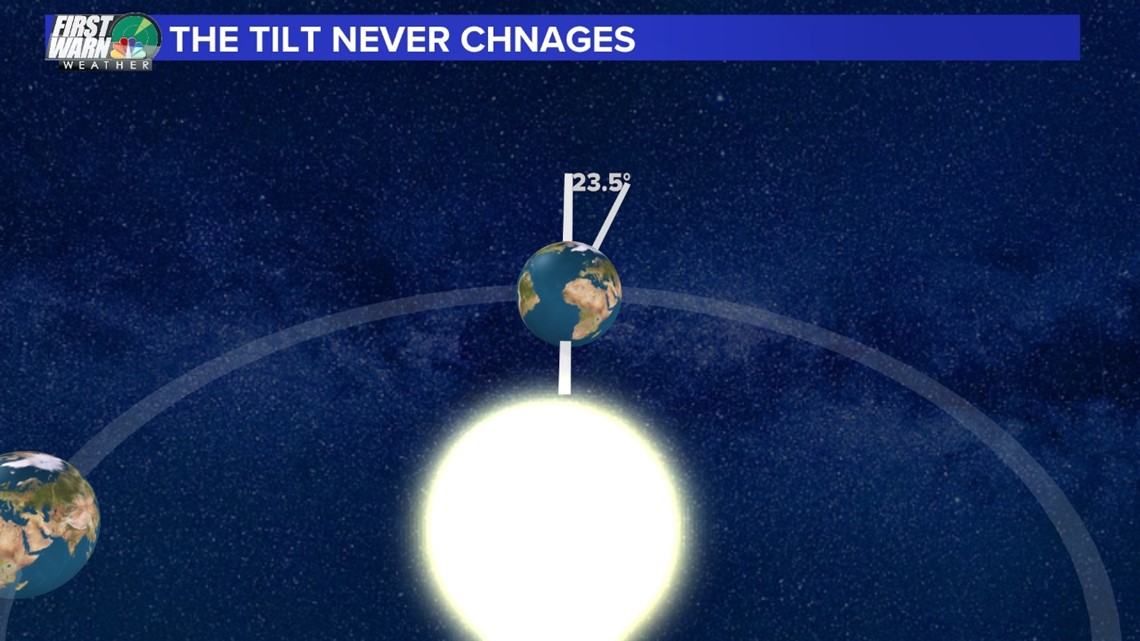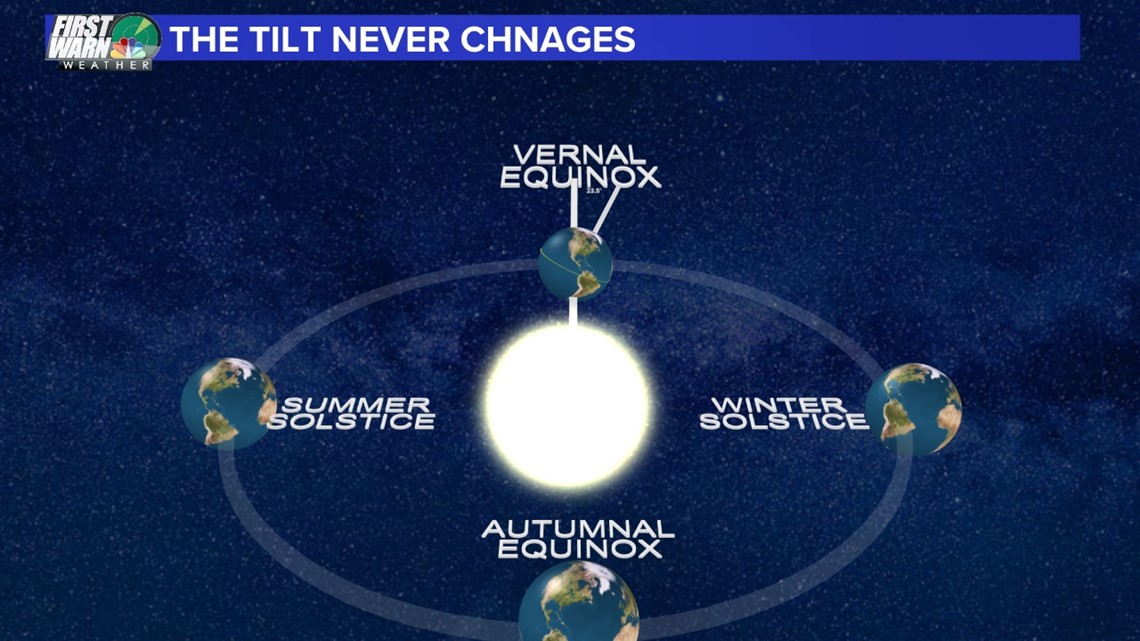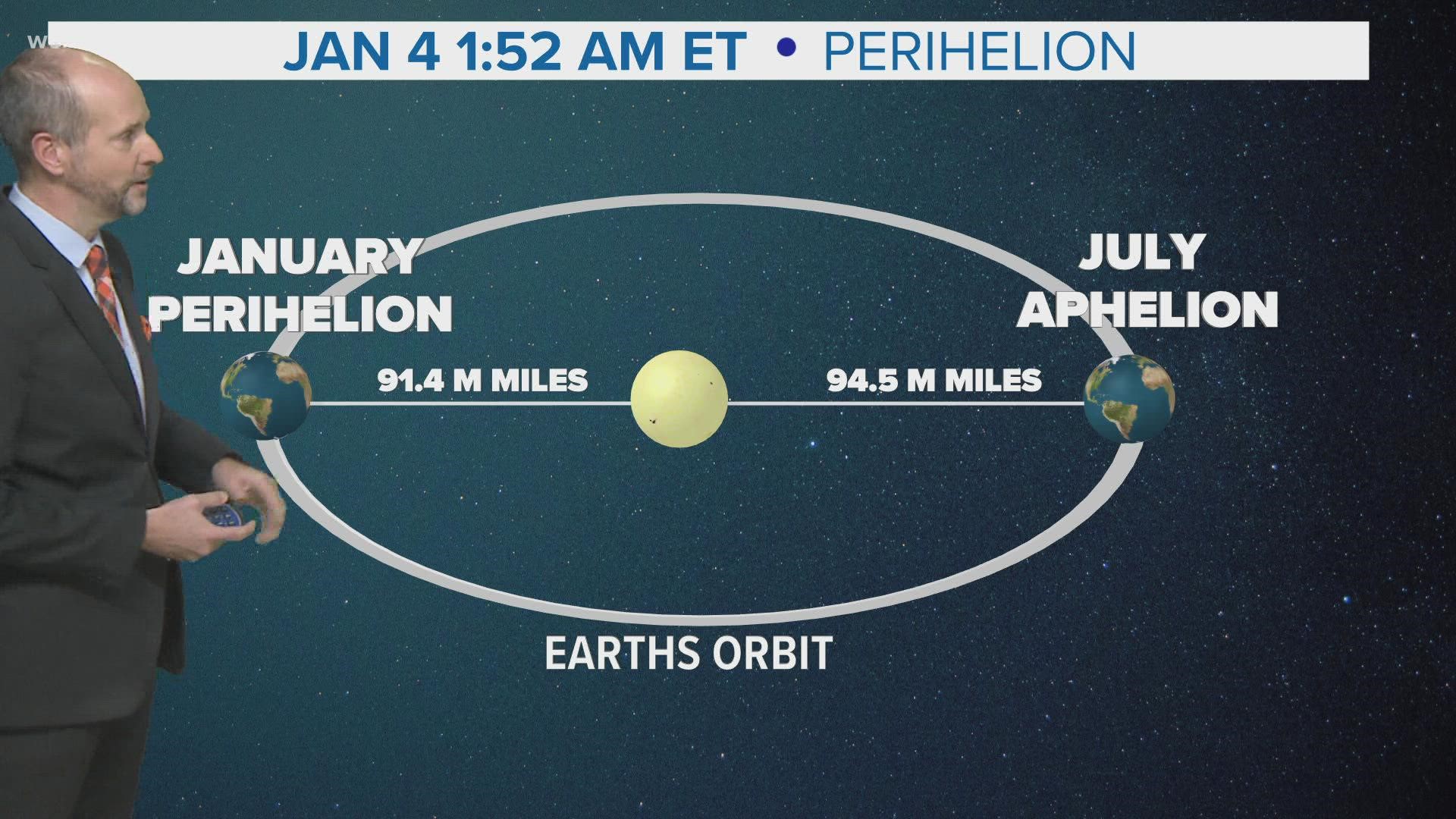CHARLOTTE, N.C. — Early Wednesday morning -- at 1:52 a.m. ET to be exact -- the Earth will be at its very closest distance to the sun all year. This is the day within the yearly elliptical orbit around the sun, that the Earth is as close as it gets to the sun all year long.
The distance is about 3.1 million miles closer to 3% closer than when it's at the farther distance in July. That farther distance day is called the Aphelion which is on July 4th, 2022 at 3:10 a.m. ET.
This closer distance does have an impact on the tides. The 3% greater gravitational pull of the sun and a new moon create astronomical high and low tides this time of the year.
So how can we be closer to the sun even if it is by only 3% and it is the coldest time of the year?
Well, that has to do with the 23.5-degree tilt of the Earth on its axis.
That tilt is what creates our seasons and has a much larger impact on our weather than the distance difference. This time of year while we are closer to the sun the northern hemisphere is actually completely tilted away from the sun.
Which results in our winter and the southern hemisphere having summer. The tilt stays the same all year long but as we orbit around the sun throughout the year the sun and the tilt allow for the direct rays of the run to hit between the Tropic of Cancer, the Equator, and Tropic of Capricorn.





